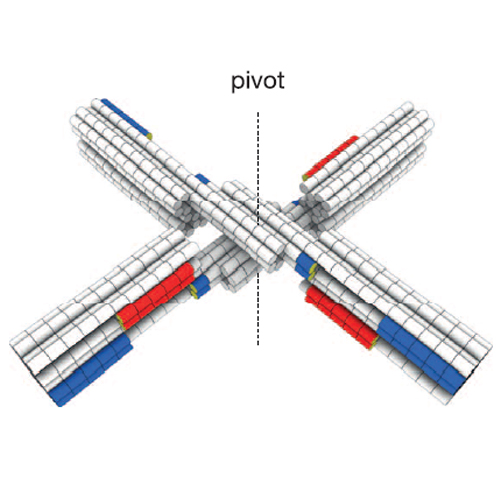Dynamic DNA devices and assemblies formed by shape-complementary, non–base pairing 3D components
27-Mar-2015
Science, 2015, DOI: 10.1126/science.aaa5372, Vol. 347 no. 6229 pp. 1446-1452 published on 27.03.2015
Science, online article
Science, online article
We demonstrate that discrete three-dimensional (3D) DNA components can specifically self-assemble in solution on the basis of shape-complementarity and without base pairing. Using this principle, we produced homo- and heteromultimeric objects, including micrometer-scale one- and two-stranded filaments and lattices, as well as reconfigurable devices, including an actuator, a switchable gear, an unfoldable nanobook, and a nanorobot. These multidomain assemblies were stabilized via short-ranged nucleobase stacking bonds that compete against electrostatic repulsion between the components’ interfaces. Using imaging by electron microscopy, ensemble and single-molecule fluorescence resonance energy transfer spectroscopy, and electrophoretic mobility analysis, we show that the balance between attractive and repulsive interactions, and thus the conformation of the assemblies, may be finely controlled by global parameters such as cation concentration or temperature and by an allosteric mechanism based on strand-displacement reactions.











